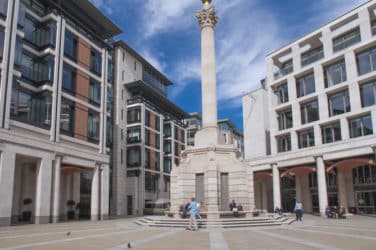The Regulation NMS subcommittee of the SEC’s Equities Market Structure Advisory made its recommendation an initial framework for an access-fee pilot for the US cash equities market during a conference call with the regulator on July 8.
Similarly to the subcommittee’s earlier working draft, the pilot would consist of $0.20-, $0.10-, and $0.02 buckets of which each eventually would contain 100 stocks that have market capitalizations over $3 billion.
The $0.02 bucket was a compromise, according to Joseph Mecane, managing director, global head of electronic equities products at Barclays and subcommittee member.
“There was a view from some members of the committee that, if nothing else for clarity reasons, we should have a no-fee bucket,” he said. “There were other views on the subcommittee, especially from the exchange standpoint, that going below $0.02 would remove too much pricing flexibility for exchanges. We decided as a group that recommending a $0.02 bucket was the best step forward.”
Mecane continued, “I think there was agreement that a $0.02 bucket would substantively mirror what a no-access fee bucket would do in practice.”
The subcommittee also suggested that any potential access-fee pilot should have a phased rollout.
The first phase would have each bucket contain only 10 stocks and last for three months before moving to the full 100 stocks for the rest of the recommended two-year pilot.
“The idea of the initial rollout for the first three months was more intended to make things smoother operationally and not necessarily to look for specific hurdles or metrics as well as to give the industry more time to adjust to the changes with a smaller population of stocks before going on to the whole universe,” explained Mecane.
Such a three-month period makes sense, added Jamil Nazarali, head of Citadel Execution Services at Citadel Securities and EMSAC member.
“I think it would be very helpful because we feel like capping access fees is going to discourage liquidity provisioning and increase spreads,” he said. “To have a period where you can look at that for three months and decide, ‘Hey it doesn’t make sense to move forward,’ would be beneficial.”
The subcommittee further recommended ongoing monitoring of the pilot with regular reporting of tracked metrics every six months.
Some of the proposed metrics included measuring the changes in the proportion of on-exchange and off-exchange market shares, behavioral routing, the amount of price improvement, and on-exchange and off-exchange trading levels.
The subcommittee felt that there were no specific issues or concerns raised that the suggested pilot would have adverse effects on the options markets.
“But, we encourage public commentary on this point,” said Mecane.
However, the subcommittee believes that the pilot should not apply to exchanges that use inverted pricing models, ATSes, or the exchange-traded fund market.
The subcommittee members reasoned that by including exchanges with inverted pricing, it would alter how the SEC applies its Rule 610 to those exchanges.
The SEC should consider inverted pricing if there was a broader separate pilot that looked at inducements, according to Mecane.
“Because the pricing of inverted venues is designed largely to compete with internalization and off-exchange trading,” he added. “That would be the proper framework to construct a pilot around inverted pricing.”
The subcommittee decided to omit ATSes since most ATS fees take the form of discretionary institutional commissions.
The argument for not including ETFs in the access fee pilot came down to the limited number of ETFs that meet the proposed $3 billion market capitalization
“I understand the rationale for doing that,” argued Nazarali. “It doesn’t seem to be a strong reason not to do it.”
“There may be a smaller number of ETFs over $3 billion, but there are a lot of highly relevant ones from a trading-volume perspective and a retail perspective,” agreed Michael Adresen, co-owner at Headlands Technologies and ESMAC member. “It would be worthwhile to include them.”
Reginald Browne, senior managing director, ETF Group at Cantor Fitzgerald and EMSAC member suggested that could find 10 highly traded ETFs to include in each bucket so that the pilot could measure any changes in the outcome based on the access fee.
The next step for the subcommittee’s recommendation is for the subcommittee to release it to the entire full committee for a vote. If the committee approves the recommendation, it will then be passed to the SEC staff for review.
More on Market Structure:





